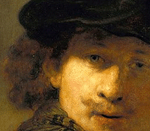
"Ascension"
This work is a prominent piece within the Romanticism art movement. As part of “The Holy Bible” series, this religious painting exemplifies Doré’s masterful ability to depict biblical narratives with profound emotion and dynamic composition.
Doré depicts Christ, in glory but still human, with wide-open arms and surrounded by a multitude of angels gesticulating theatrically. As seen in the distance through the clouds, the earthly world takes on the appearance of a wild and majestic landscape inspired by the Scottish Highlands, which Doré discovered during a trip to Scotland in 1873. Thus, the painter gives the Biblical account a concrete and dreamlike dimension, placing the onlooker far away from the Earth, amidst the Angels.
Paul Gustave Louis Christophe Doré ( 6 January 1832 – 23 January 1883) was a French printmaker, illustrator, painter, comics artist, caricaturist, and sculptor. He is best known for his prolific output of wood-engravings illustrating classic literature, especially those for the Vulgate Bible and Dante's Divine Comedy. Although Doré's work was popular with the general public during his life, it was met with mixed reviews from contemporary art critics. His work has been more widely celebrated in the centuries following his death.
Doré's later work included illustrations for new editions of Coleridge's Rime of the Ancient Mariner, Milton's Paradise Lost, Tennyson's Idylls of the King, The Works of Thomas Hood, and The Divine Comedy. Doré's work also appeared in the weekly newspaper The Illustrated London News.